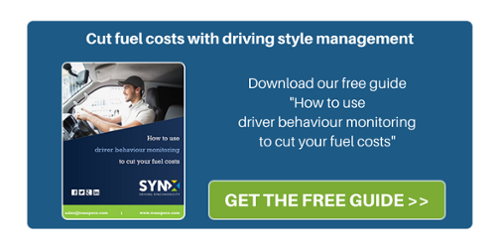
Driver behaviour has a major impact on the profitability of any business operating a fleet; but despite that, driving style management is something often overlooked as it can come across to drivers that fleet operators are using the revealing information to ‘punish’ bad driving behaviour. In some companies the tracking units are, in other words, seen as negative control measures rather than a boon for the company as a whole.
The lack of data obtained from driving style management in businesses that haven’t adopted vehicle tracking or fleet management technology also often results in training sessions for the team which are merely box-ticking exercises for health and safety compliance purposes, when in actual fact the time and resources used to train drivers could have a wiser usage.
This is surely one of the ways in which driving style management can positively impact on the running of your fleet—what then are four more ways to convince you it’s about time to look into it if you haven’t done so already?
#1 Tyres costs decrease
Harsh cornering, harsh braking, harsh acceleration and deceleration cost are proved to directly impact on tyre spend. Imagine if all of your drivers were habitually used to these kinds of driving practices, what would be the impact on your fleet? If you are able to detect this driving style among your team, you would be able to correct it and decrease the expenditure. According to an AA research carried out on around 2,200 vans, drivers who never braked harshly or only occasionally incurred tyre costs averaging £172 per annum (around €197), whereas the costs of tyres for more persistent harsh braking was around £283 per annum (around €323), an increase of 73% in costs.
#2 Lowering global maintenance costs
Again, rapid acceleration and harsh use of brakes negatively impact on the global maintenance costs. According to the same AA research, the total two-year maintenance spend in the same 2,200 vans sampled were found to increase significantly (up to 160%) dependent on the number of maximum throttle ‘floor to the floor’ events. This increase is seen in all aspects of maintenance including routine service, brakes and general services. Getting started with driving style management would surely benefit your fleet from this point of view.
#3 No more fuel waste
Poor driving is also directly connected to fuel waste, as some particular driving styles are more fuel thirsty than others. Particularly, according to the AA research, significant increases in fuel costs are observed as revving and throttle usage increase. If you have a system able to detect inefficient driving behaviours with a view to correcting them, you would expend less fuel.
#4 See how the global number of collisions decreases
The behaviour that usually contributes to wasted fuel and higher expenditure is also the least safe. Apart from that, not only are younger drivers at risk because of their inexperience, but seasoned ones could also be making poor driving decisions which could be influenced by stress. Drivers who are heavy on the acceleration and/or prone to speeding will have more collisions and claims, which is not a surprise per se, but if you are able to detect these habits through driving style management, you are also more able to make the necessary improvements.



